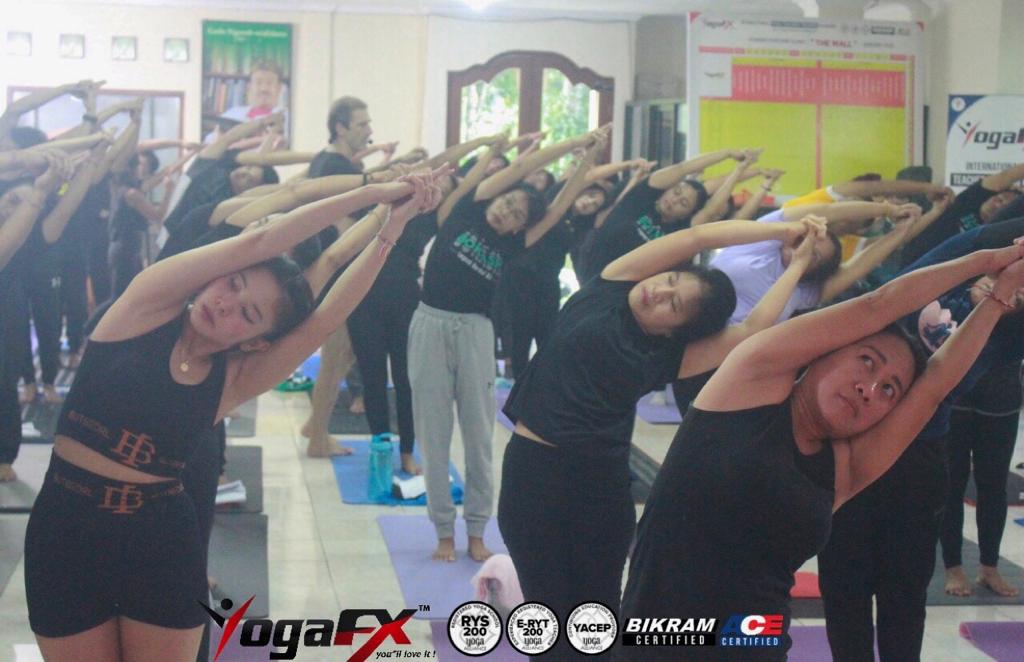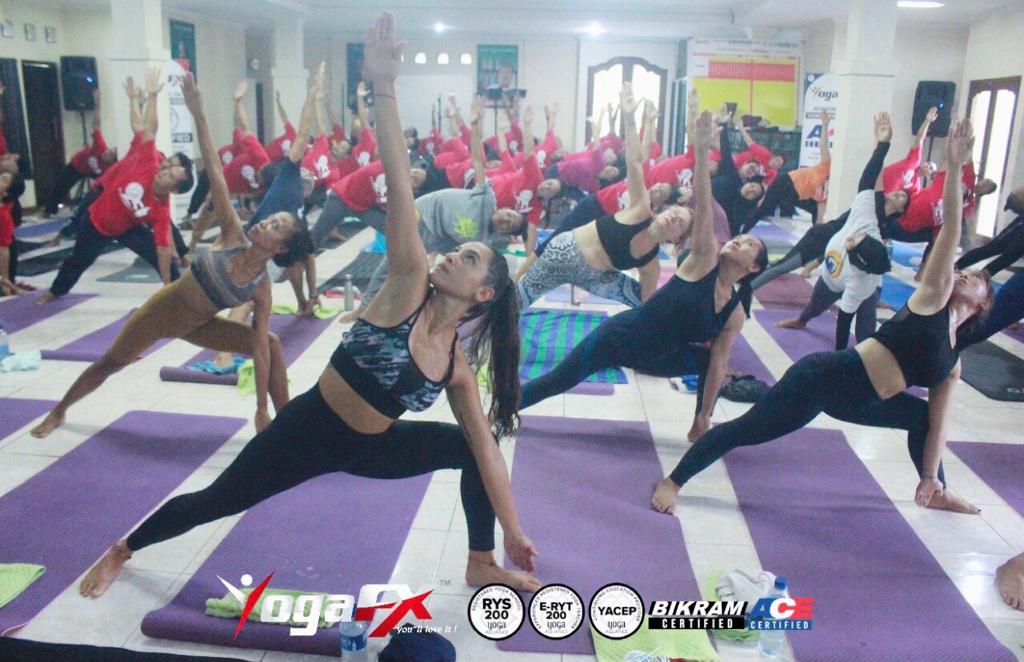Embark on a transformative journey through the Bikram Yoga sequence, where the keyword “Bikram Yoga sequence” serves as the gateway to unlocking the power of this renowned practice. Developed by Bikram Choudhury, the Bikram Yoga sequence consists of 26 postures and 2 breathing exercises, creating a holistic and transformative experience. In this comprehensive guide, we will delve into the significance and benefits of each posture within the sequence, exploring the physical, mental, and spiritual dimensions they encompass. Whether you are new to hot yoga or an experienced practitioner, this article will deepen your understanding of the Bikram Yoga sequence, empowering you to embark on a transformative journey. Step onto your mat, embrace the challenge, and immerse yourself in the profound tapestry of the Bikram Yoga sequence.

Understanding the Bikram Yoga Sequence
The Bikram Yoga sequence is a carefully curated collection of 26 postures and 2 breathing exercises designed to work synergistically, providing a comprehensive practice that targets every aspect of your being. Each posture has a specific purpose and benefits, working on different muscle groups, joints, and systems of the body. From the standing series to the floor series, the sequence progressively engages and challenges the practitioner, allowing for physical, mental, and emotional growth. The specific order and progression of the sequence are essential to optimize the benefits and create a harmonious flow of energy throughout the practice.
1. Pranayama Deep Breathing Exercise:
The sequence begins with a standing breathing exercise, focusing on deep inhalation and exhalation to expand lung capacity, improve circulation, and create a meditative state of mind.
Standing Series:
2. Half Moon Pose (Ardha-Chandrasana):
This balancing posture improves strength, flexibility, and focus while stretching the spine, legs, and hips.
3. Awkward Pose (Utkatasana):
Enhancing leg strength and overall stability, this pose also improves posture and stimulates the cardiovascular system.
4. Eagle Pose (Garudasana):
By engaging multiple muscle groups and promoting balance, this posture increases circulation and enhances joint mobility.
5. Standing Head-to-Knee Pose (Dandayamana-Janushirasana):
This posture improves flexibility in the hamstrings while strengthening the core and improving concentration.
6. Standing Bow Pulling Pose (Dandayamana-Dhanurasana):
Enhancing spine flexibility, this pose also strengthens the legs, improves balance, and increases energy flow.
“Learn As If You Will Live Forever, Live Like You Will Die Tomorrow.”
7. Balancing Stick Pose (Tuladandasana):
Focusing on balance, strength, and body alignment, this posture builds endurance and improves coordination.
8. Standing Separate Leg Stretching Pose (Dandayamana-Bibhaktapada-Paschimottanasana):
Stretching the entire backside of the body, this pose increases flexibility and strengthens the core.
9. Triangle Pose (Trikonasana):
This pose improves hip mobility, spinal flexibility, and overall strength, while also increasing circulation and reducing stress.
10. Standing Separate Leg Head-to-Knee Pose (Dandayamana-Bibhaktapada-Janushirasana):
Stretching the hamstrings, spine, and hips, this posture promotes balance and increases mental focus.
11. Tree Pose (Tadasana):
Enhancing balance and focus, this pose strengthens the legs and improves posture.
Floor Series:
12. Toe Stand Pose (Padangustasana):
This pose strengthens the ankles, knees, and arches of the feet, while improving concentration and stability.
13. Wind-Removing Pose (Pavanamuktasana):
By compressing the abdomen, this posture aids in digestion, stimulates the intestines, and releases tension in the lower back.
14. Sit-up (Ardha-Kurmasana):
Strengthening the core muscles, this pose improves digestion, flexibility in the spine, and abdominal strength.
15. Cobra Pose (Bhujangasana):
Stretching the spine, opening the chest, and strengthening the upper body, this posture improves posture and digestion.
16. Locust Pose (Salabhasana):
Targeting the muscles of the back, buttocks, and legs, this pose strengthens the spine and increases circulation.
17. Full Locust Pose (Poorna-Salabhasana):
Similar to the Locust Pose, this posture further engages the back muscles, strengthens the core, and increases energy flow.
18. Bow Pose (Dhanurasana):
Stretching the entire front of the body, this pose improves posture, enhances spinal flexibility, and stimulates digestion.
19. Fixed Firm Pose (Supta-Vajrasana):
Stretching the thighs, knees, and ankles, this pose increases flexibility in the lower body and promotes blood circulation to the digestive organs.
20. Half Tortoise Pose (Ardha-Kurmasana):
Providing a deep stretch to the spine and shoulders, this posture calms the mind and reduces anxiety and stress.
21. Camel Pose (Ustrasana):
This backbend pose strengthens the back muscles, opens the chest and shoulders, and improves posture and respiratory capacity.
22. Rabbit Pose (Sasangasana):
Offering a deep stretch to the spine and neck, this pose stimulates the thyroid and parathyroid glands, promoting hormonal balance.
23. Head-to-Knee Pose with Stretching Pose (Janushirasana with Paschimottanasana):
Stretching the entire back of the body, this posture increases flexibility and calms the mind.
24. Spine Twisting Pose (Ardha-Matsyendrasana):
Promoting spinal mobility and digestive health, this pose increases flexibility in the spine, hips, and shoulders.
25. Blowing in Firm Pose (Kapalabhati in Vajrasana):
This rapid breathing exercise energizes the body, improves mental clarity, and strengthens the abdominal muscles.
26. Final Savasana:
The practice concludes with a relaxation pose to allow for integration, restoration, and deep relaxation.

The Physical Benefits of the Bikram Yoga Sequence
The Bikram Yoga sequence offers numerous physical benefits. The combination of heat and the specific postures within the sequence allows for deep stretching, promoting flexibility and increasing range of motion. The dynamic nature of the practice builds strength, tones muscles, and improves balance. The cardiovascular aspect of the practice raises the heart rate, increasing endurance and promoting cardiovascular health. Through the regular practice of the sequence, practitioners can experience improvements in posture, alignment, and overall physical well-being.
The Mental and Emotional Benefits of the Bikram Yoga Sequence
In addition to the physical benefits, the Bikram Yoga sequence has a profound impact on mental and emotional well-being. The focused attention required during the practice cultivates mindfulness and presence, calming the mind and reducing stress. The challenging nature of the sequence fosters mental resilience, determination, and the ability to overcome obstacles both on and off the mat. The meditative aspects of the practice provide an opportunity for self-reflection, self-discovery, and the cultivation of emotional balance.
The Spiritual Dimension of the Bikram Yoga Sequence
Beyond the physical and mental benefits, the Bikram Yoga sequence also encompasses a spiritual dimension. By synchronizing movement with breath and cultivating a deep connection to the present moment, practitioners can experience a sense of inner peace and transcendence. The practice becomes a moving meditation, allowing for a deeper exploration of the self and a connection to something greater. The philosophical foundations embedded within the sequence invite practitioners to explore concepts such as unity, balance, and self-awareness.
Modifying and Adapting the Bikram Yoga Sequence
It is important to recognize that every individual’s body is unique, and modifications may be necessary to accommodate different abilities or limitations. Experienced teachers and knowledgeable instructors can provide guidance on modifications and variations to ensure a safe and inclusive practice. Yoga Alliance certified hot yoga teacher training programs, such as those offered by Mr. Ian YogaFX, provide a comprehensive understanding of the Bikram Yoga sequence and equip teachers with the skills necessary to adapt the practice for diverse student populations.
Navigating Challenges and Plateaus in the Bikram Yoga Sequence
During the journey through the Bikram Yoga sequence, practitioners may encounter challenges and plateaus. It is important to approach these moments with patience, self-compassion, and an open mind. Seek support from experienced teachers and the vibrant yoga community to overcome physical and mental obstacles. Embrace the journey of continuous growth and evolution within the sequence, knowing that each practice is an opportunity for exploration and self-discovery.

Conclusion
The Bikram Yoga sequence offers a transformative journey of self-exploration, growth, and well-being. If you are inspired to deepen your practice and share the transformative power of Bikram Yoga, consider enrolling in Bikram Hot YogaFX teacher training online. YogaFX, founded by Mr. Ian, offers Yoga Alliance certified programs that provide a comprehensive education and equip individuals with the knowledge and skills to guide others through the practice of Bikram Hot YogaFX. Embrace the transformative power of the Bikram Yoga sequence, unlock your true potential, and embark on a fulfilling path of self-discovery and transformation. With Bikram yoga teacher training online, you can now access the training and education you need to become a certified Bikram yoga instructor from the comfort of your own home. Start your journey today and join the vibrant community of Bikram yoga teachers who are making a difference in the world of yoga.

